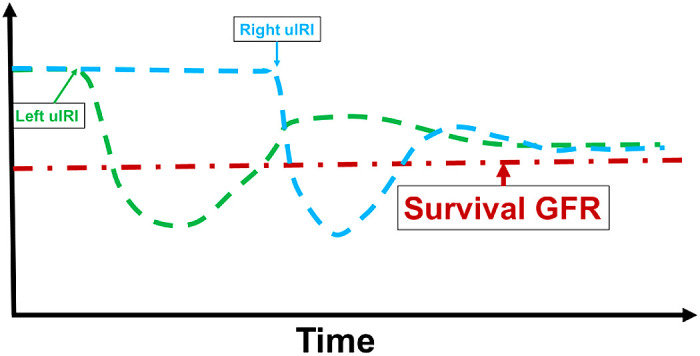Fig. 3.

Rationale for the acute kidney injury to chronic kidney disease transition in the two-stage bilateral ischemia-reperfusion injury (bIRI) model. The red line suggests the threshold of the glomerular filtration rate (GFR) for the animal to survive. The green and blue lines represent the projected GFR changes for the left and right kidneys. In the two-stage bIRI model, severe IRI is induced in the left kidney while the right kidney is kept intact. Even though GFR of the injured left kidney decreases below the survival threshold, the nonischemic right kidney could still maintain the animal to survive. After GFR of the injured left kidney recovers above the survival threshold, the intact right kidney is subjected to delayed, but equivalent, IRI. In this way, both kidneys of the animal would successively undergo severe IRI with only partial recovery followed by a continuous decline in GFR.
